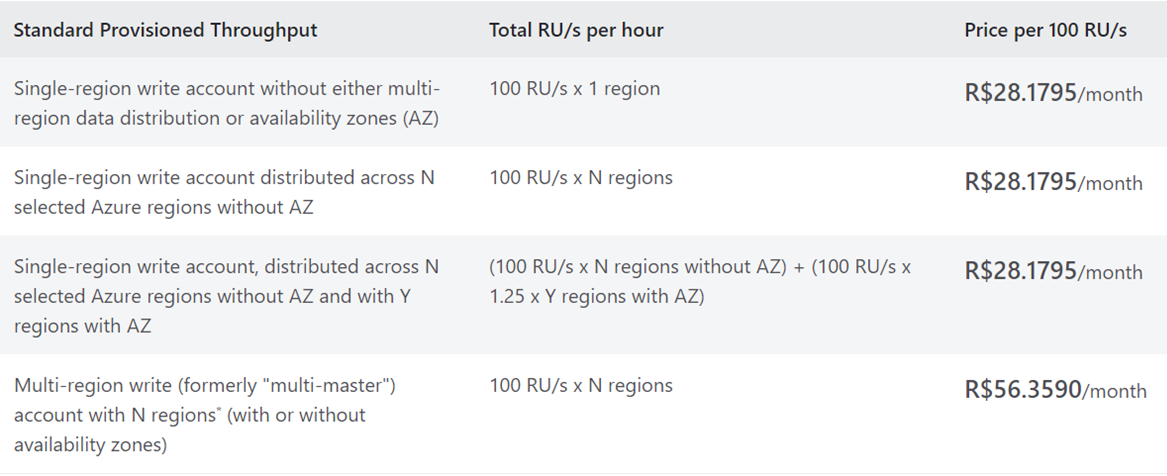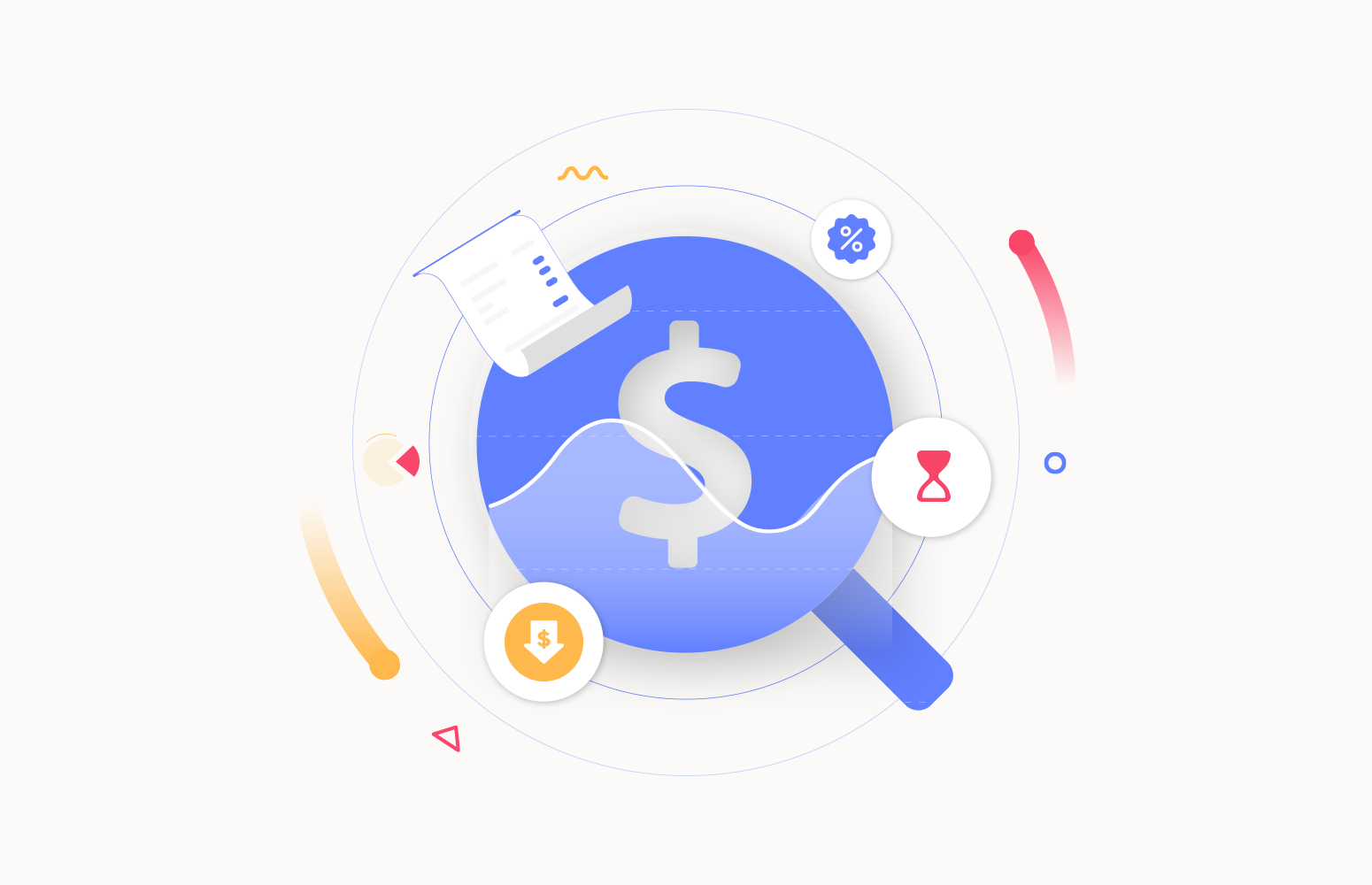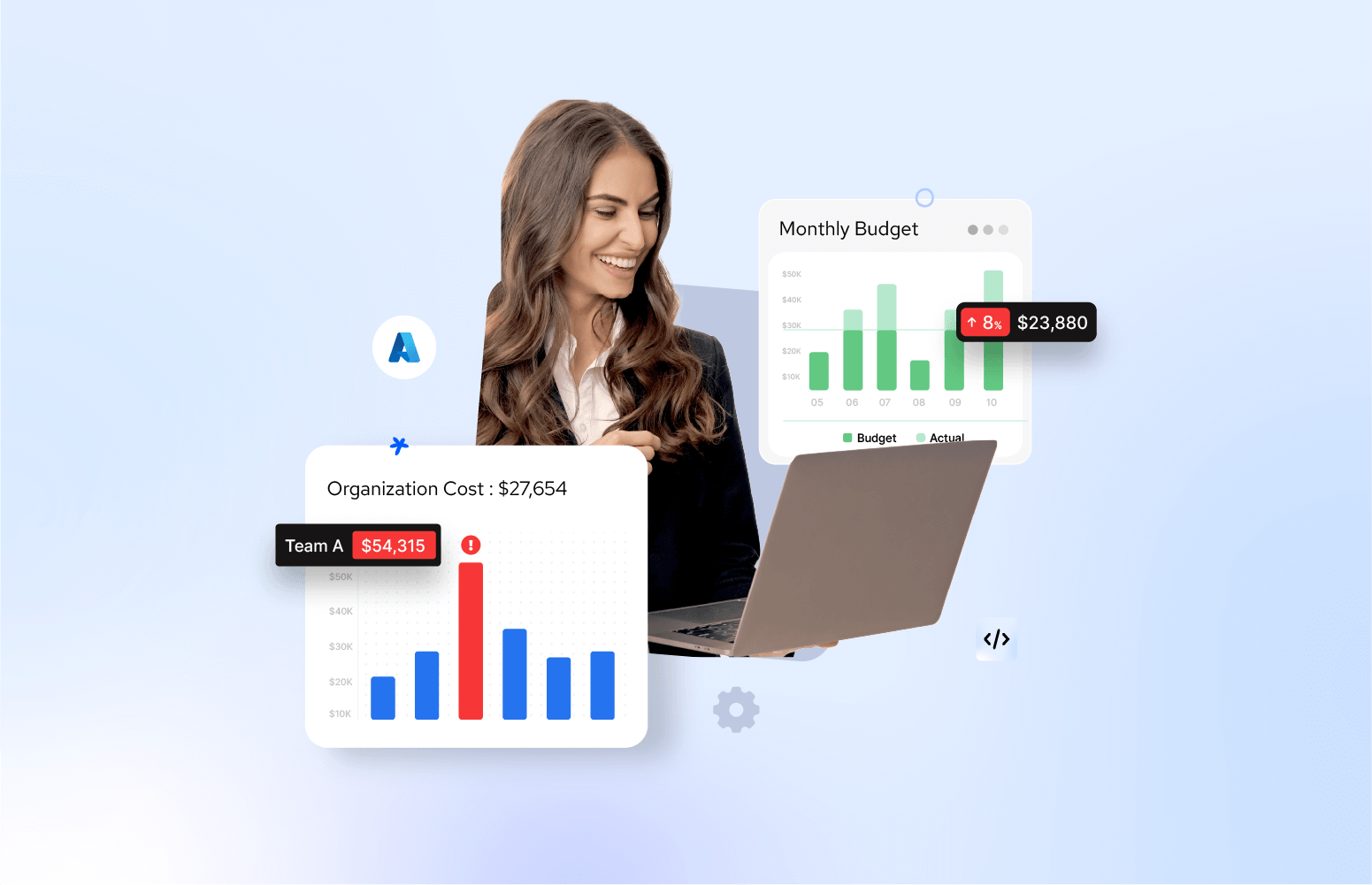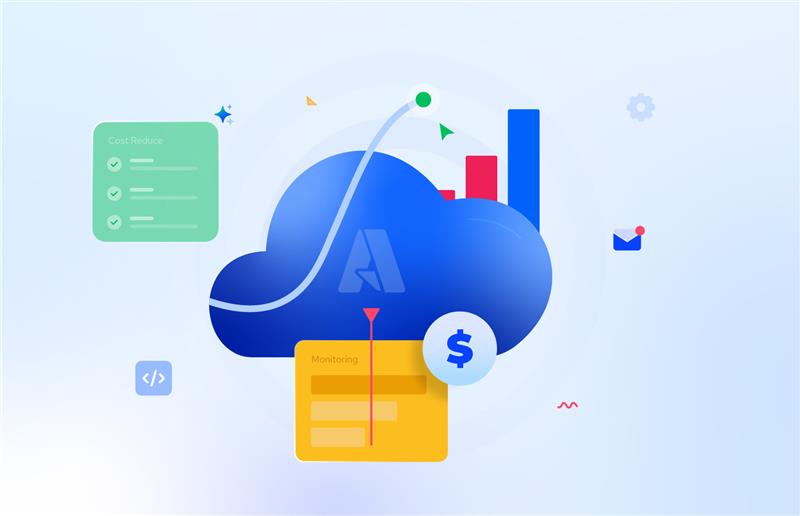Azure Cosmos DB, a global, multi-model database by Microsoft Azure, ensures globally responsive and scalable applications with low-latency, high-throughput data access. With support for diverse data models, global distribution, flexible consistency models, automatic scaling, and comprehensive SLAs, it’s crucial for modern applications requiring agility, security, and compliance.
Its multi-API support, including SQL, MongoDB, Cassandra, Gremlin, and Table, enhances versatility, making it a key component for building robust, globally distributed applications. Understanding Azure Cosmos DB pricing is essential for businesses and developers. It enables effective cost management, resource allocation optimization, scalability planning, and informed decision-making, ensuring alignment with technical needs and budgetary constraints.
Azure Cosmos DB pricing models
Azure Cosmos DB charges for three distinct types of usage: compute, storage, and bandwidth:
Compute pricing
Azure Cosmos DB offers flexible compute pricing with a pay-as-you-go model, adjusting resources dynamically based on provisioned throughput measured in Request Units per Second (RU/s). Auto-scale options optimize performance and cost efficiency for multi-model databases.
Storage pricing
Storage pricing is pay-as-you-go, charging for the amount of data stored. This flexible model allows users to manage costs efficiently based on their data storage needs.
Usecase video on “Spike in Azure storage costs – Monitoring and troubleshooting”
Bandwidth pricing
Bandwidth pricing adopts a pay-as-you-go model, billing users for data transfer between Cosmos DB and Azure services. This flexibility accommodates diverse workloads, optimizing costs for global distribution.
These pricing models provide a scalable, efficient, and cost-effective solution for various application requirements in Azure Cosmos DB’s globally distributed environment.
Request units (RUs)
Request Units (RUs) in Azure Cosmos DB serve as a unit of measure for the resources consumed by database operations, including reads and writes. RUs provide a way to quantify and allocate resources efficiently. Provisioning 1,000 RUs means accommodating the complexity of 1,000 read or write operations per second.
For instance, a read operation consuming 5 RUs allows 200 reads per second with 1,000 provisioned RUs. Adjusting throughput dynamically or using auto-scale optimizes for varying workloads; scaling from 1,000 to 2,000 RUs handles increased traffic.
Write operations, say 10 RUs, permit 100 writes per second with 1,000 RUs. Monitoring RUs aids optimization, ensuring resources match dynamic workload demands in Azure Cosmos DB’s globally distributed environment. This flexibility ensures efficient resource management for varying workloads.
Azure Cosmos DB pricing tiers
Here is a general overview of the various pricing tiers available in Azure Cosmos DB, including provisioned throughput and serverless options:
Provisioned Throughput (Standard and Auto scale)
- Standard Provisioned Throughput: In the traditional provisioned throughput model, you determine the desired number of request units (RUs) per second for your containers. You allocate and pay for a predetermined level of throughput capacity in advance.
-
Auto scale Provisioned Throughput: Auto scale in Azure Cosmos DB dynamically modifies the provisioned throughput in response to your application’s demands, automatically adjusting the throughput within a defined range.


Serverless Consumed Throughput
In the serverless pricing tier, you are billed based on the actual consumed RU/s from your operations on containers. This proves advantageous for workloads that are sporadic or unpredictable since you only incur charges for resources utilized during active operations.

Free tier
Azure Cosmos DB provides a free tier that grants a restricted amount of provisioned throughput and storage without any charges. This tier is specifically designed for development purposes and small-scale applications.
Azure Cosmos DB free tier for 30 days
Users can utilize a 30-day free trial, which includes a specified amount of provisioned throughput and storage. This trial period enables users to explore and assess Azure Cosmos DB.
Multi-region writes (Geo-Replication)
For scenarios necessitating global distribution, additional charges may be incurred when activating multi-region writes for your Cosmos DB account. This functionality empowers you to simultaneously write data to multiple regions.
Here is a breakdown of key points when comparing the Provisioned Throughput and Serverless Tiers in Azure Cosmos DB:
| Feature/Criteria | Provisioned Throughput Tier | Serverless Tier |
| Resource Provisioning | Requires manual provision of throughput in RU/s. | Operates on a consumption-based model; no need for explicit provisioning. |
| Workload Predictability | Ideal for applications with predictable and consistent workloads. | Suitable for applications with sporadic or unpredictable workloads. |
| Scalability | Offers manual scaling based on performance needs. | Scales are automatically based on actual consumption within defined limits. |
| Suitable Use cases | High-performance scenarios and predictable workloads. | Intermittent or unpredictable workloads, cost-sensitive scenarios. |
| Control over resources | Provides precise control over allocated resources. | Offers flexibility with automatic resource scaling and consumption billing. |
| Budget Considerations | This may result in higher costs for provisioned resources. | It can be more cost-efficient, especially for low-volume or sporadic workloads. |
| Development and Testing | Suitable for understanding and managing consistent workloads. | Cost-effective during development and testing phases due to consumption-based billing. |
| Autoscaling | Manual scaling is required. | Scales are automatically based on actual usage, eliminating manual adjustments. |
| Feature Availability | Supports all Azure Cosmos DB features. | Some features and functionalities may have limitations or differences. |
7 Things to consider when choosing the appropriate tier for your application
- Performance Requirement – Evaluate your application’s performance needs—opt for the provisioned throughput tier for consistent workloads, or the serverless tier for variable demands.
- Predictable Vs. Pay-as-you-go – Choose between predictable costs with commitment (Provisioned Throughput) or pay-as-you-go flexibility (Serverless).
- Development and Small-Scale Application – For development or small-scale apps, explore the free or serverless tier.
- Global distribution – Consider whether your application requires global distribution. If so, evaluate the additional costs associated with multi-region writes for achieving high availability and low-latency access across different geographic regions.
- Global Sensitivity – Align your choice with budget constraints and scrutinize data transfer patterns, especially in globally distributed scenarios.
- Indexing and Query Complexity – Evaluate query and indexing complexity to determine the most cost-effective tier for your data retrieval patterns.
- Future Growth and Flexibility – Consider the potential growth of your application. Choose a tier that allows for flexibility and can accommodate future scalability requirements.
What are the key factors affecting Azure Cosmos DB cost?
Different factors contribute to the cost of using Azure Cosmos DB, encompassing various aspects of the service. Key contributors to the overall cost include:
1. Storage
The amount of data stored in your Azure Cosmos DB containers affects the cost. You are billed based on the volume of storage used by your documents and data.
2. Throughput
- Provisioned Throughput: The provisioned throughput level you select determines the cost. Higher throughput levels incur additional charges, as you are paying for the allocated performance capacity.
- Auto scale Throughput: With autoscaling, costs are based on the dynamically adjusted throughput within the specified range. As your application’s demand increases or decreases, the cost scales accordingly.
3. Data Transfer
- Ingress: Charges may apply for data transferred into Azure Cosmos DB. This includes data sent to your Cosmos DB account from external sources.
- Egress: Costs can be associated with data transfer out of Azure Cosmos DB, such as when retrieving data from your account.
4. Global Distribution
If you choose to replicate your data across multiple regions for global distribution, additional charges may apply for data transfer between these regions.
5. Indexing
Azure Cosmos DB automatically indexes data to support efficient querying. The size and complexity of your indexes can impact the cost, especially for large or complex datasets.
6. Request Units (RUs)
In provisioned throughput models, you pay for the number of RUs per second that you provision. The complexity and volume of your queries and operations influence the required RUs and, consequently, the cost.
7. Multi-region Writes
Enabling multi-region writes for global redundancy may have additional costs associated with simultaneous write operations across multiple regions.
Careful consideration of these factors and their impact on your specific use case is essential when estimating and managing the costs associated with utilizing Azure Cosmos DB.
Reduce Azure Cosmos DB expenditures effectively using Turbo360
The main objective of Turbo360’s Cost Analyzer is to oversee, visualize, monitor, and optimize Azure cloud expenditures effectively. It provides comprehensive management functionalities through a unified platform.
The Cost Analyzer enhances precise cost visualization and efficient tracking of expenses related to Azure Cosmos DB. This is achieved by organizing the Cosmos DB, which includes multiple tables and containers distributed across various subscriptions and tenants, into Cost Management groups.
The Cost Analysis feature in the Cost Analyzer tool aids in efficiently categorizing Azure expenditures from different subscriptions and tenants, offering a comprehensive visual narrative of Azure Cosmos service costs through diverse charts and tables. Configure cost monitors to receive notifications whenever expenses for the Azure Cosmos dB surpass a predefined threshold.
Read more: A deep dive to mastering Azure Cosmos DB Cost Optimization
The Cost Optimization feature aids in scaling down the throughput of Cosmos containers, tables, and databases within Cosmos accounts distributed across various subscriptions during non-business hours. Through the implementation of a schedule, resources are adjusted in accordance with actual usage, efficiently averting budget overruns.
The Rightsizing features within the Cost Analyzer provide suggestions based on CPU consumption for each container, table, and database in the Cosmos account. These recommendations come with default settings or can be configured by the user. The tool offers recommendations to fine-tune throughput, suggesting adjustments for both downgrade and upgrade. It also detects inactive resources, unveiling potential avenues for cost-saving opportunities.
Conclusion
In summary, understanding Azure Cosmos DB pricing is essential for effective resource management. Employing tools like the Cost Analyzer and embracing cost optimization practices ensures a balance between performance and budget considerations. Navigating the intricacies of pricing allows organizations to maximize the benefits of Cosmos DB while maintaining financial efficiency.
FAQs
1) Why is Azure Cosmos DB so expensive?
Azure Cosmos DB can be costly due to its robust features, global distribution, and low latency performance. Factors like provisioned throughput, storage, and data transfer contribute to expenses. Users pay for the scalability, flexibility, and advanced capabilities provided by the service.
2) Is Cosmos DB cheaper than SQL?
Comparing Azure Cosmos DB and SQL depends on usage patterns. While Cosmos DB offers unparalleled scalability and global distribution, SQL databases may be more cost-effective for smaller-scale or fixed-location applications. Costs vary based on specific needs and configurations.
3) Is Cosmos DB usually more expensive than blob storage?
Yes, Azure Cosmos DB is typically more expensive than Azure Blob Storage. Cosmos DB provides a fully managed, globally distributed database service with advanced features, while Blob Storage is a simple object storage solution, generally more cost-effective for storing large volumes of unstructured data.











